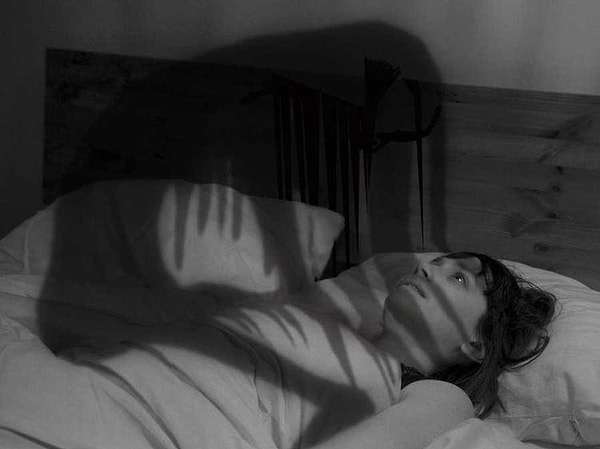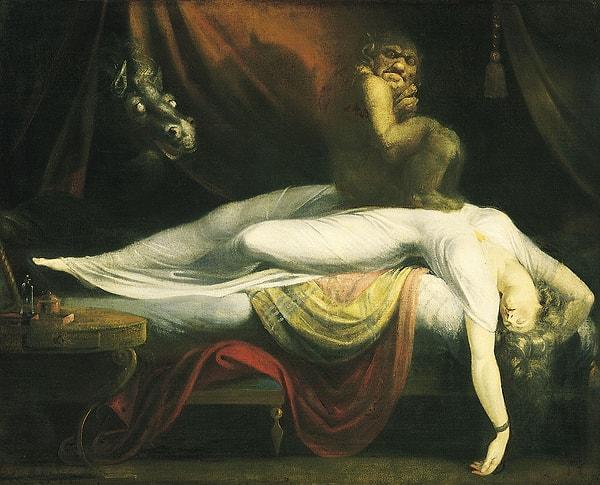What is Sleep Paralysis: The Mysteries of the Night Unveiled
Sleep is a vital aspect of human existence, a time when our bodies and minds rejuvenate, preparing us for the challenges of the day ahead. However, for some, the realm of slumber can become a haunting experience, marked by episodes of sleep paralysis. This enigmatic phenomenon has baffled and terrified individuals for centuries, leading to a plethora of myths, legends, and misconceptions. In this comprehensive exploration, we delve into the intricacies of sleep paralysis, unraveling its underlying causes, the science behind it, and strategies to manage and alleviate its often terrifying manifestations.
The Sleep Paralysis Enigma Unveiled

Sleep paralysis is a bizarre and unsettling phenomenon that occurs when a person experiences a temporary inability to move or speak while falling asleep or waking up. During these episodes, individuals are often acutely aware of their surroundings but find themselves trapped in a state between sleep and wakefulness, rendering them immobile and vulnerable. This condition can be accompanied by vivid hallucinations, a sensation of pressure on the chest, and an overwhelming feeling of dread.
One of the most distinctive and harrowing aspects of sleep paralysis is the presence of vivid and often terrifying hallucinations. These hallucinations can take on a variety of forms, ranging from shadowy figures and malevolent entities to bizarre and surreal scenarios. Many who have experienced sleep paralysis report feeling an intense and oppressive presence in the room, heightening their sense of fear and helplessness.
The Science Behind Sleep Paralysis

While sleep paralysis is often associated with supernatural or paranormal explanations, its roots lie firmly in the realm of neuroscience and sleep physiology. To understand this phenomenon, we must delve into the intricate processes that govern our sleep-wake cycles.
Sleep is a complex, cyclical process characterized by different stages, including rapid eye movement (REM) and non-rapid eye movement (NREM) sleep. REM sleep is the stage where dreams typically occur and is marked by heightened brain activity. During REM sleep, the brain sends signals to inhibit voluntary muscle activity, effectively inducing temporary paralysis to prevent individuals from acting out their dreams. This protective mechanism is known as REM atonia.
Sleep paralysis occurs when there is a disruption in the transition between REM sleep and wakefulness. Normally, during the transition from REM sleep to wakefulness, the brain gradually reactivates the voluntary muscles, allowing individuals to regain control of their bodies. However, in cases of sleep paralysis, this process is faulty, leaving individuals temporarily paralyzed even though they are conscious and aware.
Several factors can contribute to the occurrence of sleep paralysis:
1. Sleep Deprivation: A lack of quality sleep, often caused by insomnia or irregular sleep patterns, can increase the likelihood of experiencing sleep paralysis.
2. Sleep Disorders: Conditions such as narcolepsy, sleep apnea, and restless legs syndrome are linked to a higher risk of sleep paralysis.
3. Stress and Anxiety: High levels of stress and anxiety can disrupt sleep patterns and trigger sleep paralysis episodes.
4. Sleep Position: Sleeping in a supine position (on your back) is associated with a higher incidence of sleep paralysis.
5. Irregular Sleep Schedule: Frequently changing your sleep schedule or experiencing jet lag can increase vulnerability to sleep paralysis.
6. Substance Use: The consumption of alcohol, caffeine, or certain medications before bedtime can contribute to sleep paralysis episodes.
Cultural and Historical Perspectives

Sleep paralysis has plagued humanity for centuries, and its manifestations have been interpreted through the lens of various cultures and historical periods. In many cultures, sleep paralysis is often attributed to malevolent supernatural entities or demonic forces. These cultural interpretations have given rise to a rich tapestry of folklore and legends surrounding sleep paralysis.
In Asian cultures, particularly in Japan, sleep paralysis is known as 'kanashibari.' It is often described as an encounter with malevolent spirits or supernatural beings. Similarly, in African cultures, sleep paralysis is sometimes linked to malevolent spirits or witchcraft.
In Western cultures, sleep paralysis has been associated with folklore about nocturnal demons or malevolent entities that visit individuals during the night, sitting on their chests and causing the sensation of pressure and breathlessness. This phenomenon has been referenced in historical texts such as the medieval work 'The Book of the New Sun' by Gene Wolfe.
Throughout history, these cultural interpretations of sleep paralysis have contributed to the fear and dread associated with the condition. However, as our understanding of sleep physiology has advanced, the mysterious veil surrounding sleep paralysis has gradually been lifted.
Sleep Paralysis and Lucid Dreaming

Interestingly, some individuals have harnessed the unique state of sleep paralysis as a gateway to lucid dreaming. Lucid dreaming is a phenomenon in which the dreamer becomes aware that they are dreaming and can sometimes exert control over the dream's narrative.
During sleep paralysis, individuals may find themselves in a paradoxical situation. Although they are unable to move their physical bodies, they often retain a heightened level of awareness. Some have learned to use this awareness to transition into a state of lucid dreaming. In these instances, individuals can transform their terrifying sleep paralysis experiences into more positive and controlled dream scenarios.
Managing and Coping with Sleep Paralysis

For those who regularly experience sleep paralysis, managing and coping with this phenomenon is essential for improving the quality of their sleep and overall well-being. Here are some strategies that may help:
1. Sleep Hygiene: Maintaining a consistent sleep schedule, creating a comfortable sleep environment, and avoiding stimulants before bedtime can promote healthy sleep patterns.
2. Stress Reduction: Practicing relaxation techniques such as meditation, deep breathing exercises, and progressive muscle relaxation can reduce stress and anxiety, which may contribute to sleep paralysis.
3. Sleep Position: Sleeping on your side rather than your back can reduce the likelihood of experiencing sleep paralysis.
4. Cognitive Behavioral Therapy: In some cases, cognitive behavioral therapy (CBT) may be beneficial in addressing the underlying causes of sleep paralysis, particularly if it is associated with anxiety or trauma.
5. Medication: In severe cases, a healthcare professional may prescribe medication to manage sleep disorders that contribute to sleep paralysis.
6. Sleep Education: Understanding the science behind sleep and the mechanics of sleep paralysis can demystify the experience, making it less frightening.
Keşfet ile ziyaret ettiğin tüm kategorileri tek akışta gör!


Send Comment